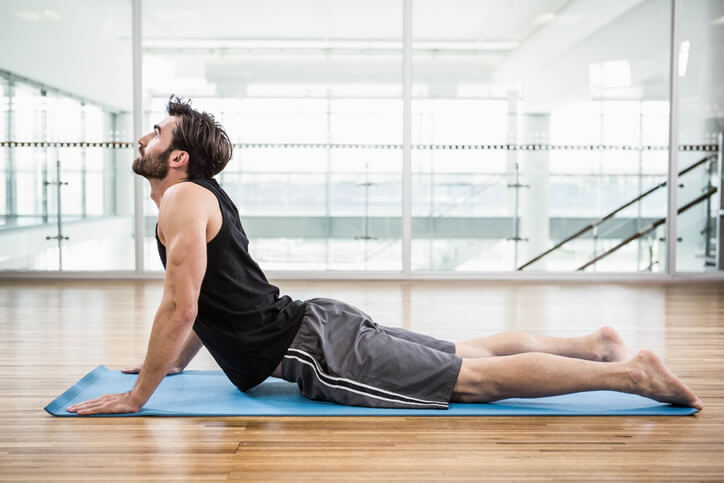Stretching is an essential component of fitness that often gets overshadowed by more glamorous workouts. Yet, it holds the key to enhancing performance, preventing injuries, and improving flexibility.
However, the world of stretching is fraught with misconceptions that can deter beginners from reaping its full benefits. This blog post delves into the myths and facts about stretching, providing beginners with the knowledge they need to embark on a safe and effective journey.
Myth 1: Stretching Before Exercise Prevents Injuries

The common belief is that stretching before any physical activity is crucial to prevent injuries. However, research suggests that the effectiveness of it in injury prevention is not as straightforward as once thought. Involving movement and warm-up exercises can prepare the body for physical activity better than static stretching.
Understanding the Role
Dynamic stretching improves blood flow and increases the temperature of your muscles, making them more flexible and prepared for the demands of your workout.
It contrasts with static stretching, where holding a stretch for a prolonged period might lead to decreased muscle strength temporarily. Therefore, incorporating dynamic stretches before workouts and saving static stretches for cooldowns is advisable.
Myth 2: Stretching Increases Muscle Length

It’s a widespread belief that regular stretching can permanently increase the length of muscles, leading to improved flexibility. However, flexibility improvements from it are more about increasing tolerance to the stretch sensation than actual muscle elongation. Muscles return to their original length after doing it, but our tolerance for stretching further improves over time.
How Flexibility Improves
Flexibility improvements are achieved through consistent routines that enhance the muscle’s ability to elongate temporarily during the stretch. This temporary elongation, combined with an increased tolerance to stretching, contributes to an overall sense of greater flexibility, not a permanent change in muscle length.
Utilizing tools like “CastleFlexx,” which is designed to aid in flexibility, can significantly enhance this process. By providing targeted support and resistance, CastleFlexx helps deepen stretches without straining, allowing for a more effective and safe way to improve flexibility and muscle elongation.
Integrating such innovative tools into your routine can offer a more structured and efficient path to achieving and maintaining optimal flexibility.
Myth 3: All Stretches Are Equally Effective for Everyone

One of the most pervasive myths is that a one-size-fits-all approach to stretching exists. In reality, the effectiveness varies greatly depending on an individual’s body type, activity level, and specific fitness goals. Personalized routines that cater to individual needs and limitations are far more effective.
Understanding Body Diversity
People’s bodies respond differently to various types. While some may benefit more from static stretches, others may find dynamic extension more beneficial. Additionally, factors like age, flexibility, and the presence of any chronic conditions or injuries play a crucial role in determining the most beneficial practices for an individual.
Myth 4: Stretching Immediately Increases Performance
There’s a common misconception that stretching right before an event can significantly enhance performance. While doing it, particularly dynamic stretching, can prepare your muscles for activity by increasing blood flow and flexibility, the immediate impact on performance varies.
For some activities, like sprinting or powerlifting, excessive stretching beforehand might temporarily reduce muscle strength and power.
Long-term Benefits Over Immediate Gains
The key to stretching is viewing it as a long-term investment in your body’s health and performance capabilities rather than a quick fix for immediate gains. Regular, consistent routines contribute to flexibility and muscle health over time, which indirectly improves performance by reducing the risk of injuries and enhancing recovery processes.
Myth 5: You Should Always Stretch to the Point of Pain

A prevalent myth is that for it to be effective, it must be done to the point of pain. This is not only incorrect but can be harmful. Extending should involve a mild, comfortable tension, and reaching the point of pain can indicate that the muscle is being overstretched, risking injury.
Listening to Your Body
It’s essential to listen to your body and recognize the difference between a beneficial stretch and one that could cause damage. Effective extension promotes flexibility and circulation without causing pain, leading to a more sustainable and beneficial exercise routine.
Myth 6: Static Stretching is Bad for You
Static stretching has received a bad rap in recent years, with some claiming it can diminish performance or increase injury risk when done before workouts. However, when performed properly and at the right time, particularly after exercise, static extension can aid in recovery, improve flexibility, and decrease muscle soreness.
Integrating Static Stretches Appropriately
The key to benefiting from static stretches lies in their timing and execution. Incorporating them as part of a cool-down routine after workouts can help in gradually lowering the heart rate, relaxing the muscles, and improving flexibility over time without negatively impacting muscle performance.
Myth 7: Stretching is Unnecessary for Young People

The notion that young people don’t need to stretch because they’re already flexible or less at risk of injury is misleading. It is beneficial at any age, helping to improve flexibility, enhance muscular coordination, and instill good habits for physical activity and posture early on.
Building a Foundation for Lifelong Fitness
For young people, especially those active in sports or physical activities, it can play a crucial role in injury prevention and overall physical performance. It’s an essential component of a well-rounded fitness routine that can set the foundation for a healthy, active lifestyle throughout one’s life.
Myth 8: It Can Fix All Types of Back Pain

While stretching can help alleviate some types of back pain by improving flexibility and reducing tension in the muscles surrounding the spine, it’s not a cure-all solution. Back pain can stem from a variety of causes, including structural issues, which doing it alone cannot resolve.
Complementary Approach to Back Pain
For those experiencing back pain, incorporating it into a broader treatment plan that may include physical therapy, strength training, and ergonomic adjustments is more effective. It’s also crucial to consult a healthcare provider to understand the underlying cause of back pain and receive a tailored treatment plan.
Conclusion
Dispelling myths about stretching is crucial for beginners to approach their routines with realistic expectations and safe practices. Understanding that extension is not a one-size-fits-all exercise, recognizing the importance of dynamic stretching over static stretching for warm-ups, and acknowledging that improvements in flexibility come from increased tolerance rather than permanent muscle elongation, are essential insights.







